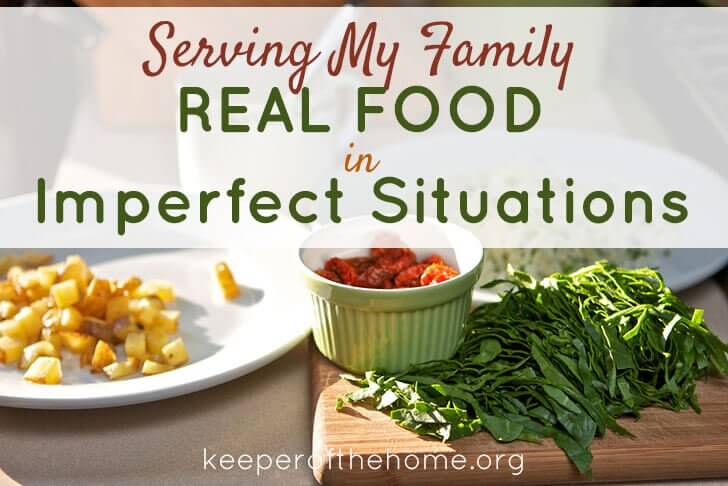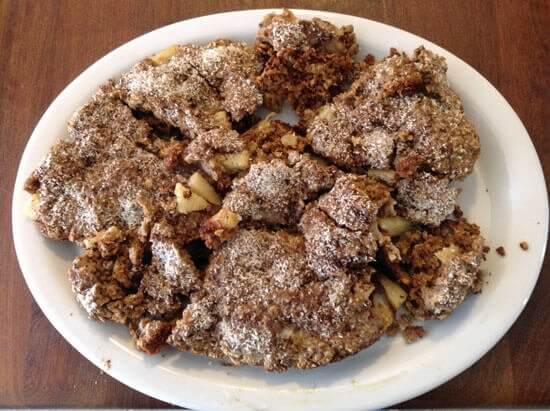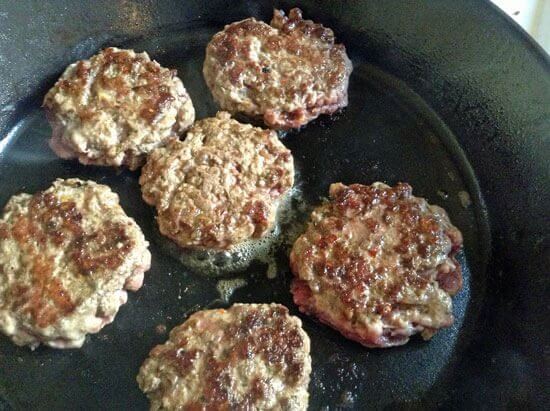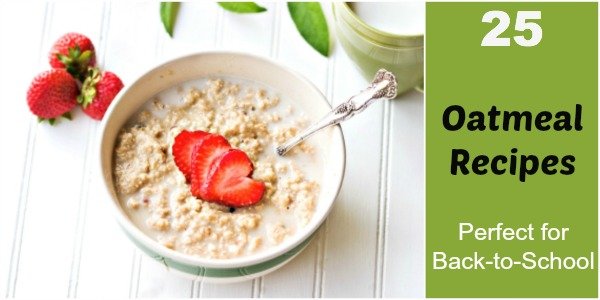Serving My Family Real Food in Imperfect Situations

Did you know that eating real food isn’t dependent on eating a set menu, based on particular “health” foods that you have to be able to find or afford?
(did I just hear a collective sigh of relief?)
This winter we’ve talked a lot about real food made simple— what it is (and isn’t), how to take baby steps towards eating better, how to afford it, and even how to buy it in a regular grocery store.
I feel like I’m on the ultimate real food experiment right now, as our family travels for 54 weeks across every continent, and I have to make meal times happen no matter where we are, or whether I can only find 8 of the 27 items on my usual grocery list because nothing is familiar or accessible.
It’s a (mostly) thrilling challenge for me, as I love cooking and sourcing out real, wholesome foods to put on the table.
There have also been days when the thrill of the hunt finds me crying in the dairy aisle because I can’t find any yogurt without sugar in it (true story).
Can you still eat real food if you can’t find all the right things?
If I can’t find plain yogurt, raw milk, virgin coconut oil, alternative whole grains (we have grain sensitivities), free-range chicken and eggs, organic lettuce, fair trade cocoa powder, unfiltered apple cider vinegar, stevia, or sea salt, can we still eat well? Should I just throw my hands up in the air and go buy MSG-laden soup mixes, sugar cereals, and frozen chicken fingers, with a little McDonald’s on the side?
I still believe that it’s entirely possible for us to eat real food this year as we travel.
Here is a definition that Courtney used to define real food earlier this year:
Real food is wholesome and nourishing. It is simple, unprocessed, whole food. Real food is pure and unadulterated, sustained yet unchanged by man.
Based on her definition (which I would agree with), I believe that you can eat real food no matter where you live, without having to subscribe to any particular diet or style of eating.
You may or may not be familiar with Dr. Weston Price and his work, but he was a dentist who traveled in the 1930’s and 40’s to primitive people groups all around the world (the South Pacific islands, isolated mountain villages in Switzerland, the plains of Africa, the indigenous people in the Andes of South America, among many others). His primary goal was to learn why the dental health (and health in general) of the American people was rapidly degenerating, and he wanted to study and compare these isolated people’s traditional eating habits and their excellent dental health and bone structures to see if he could find the answer.
One of the fascinating aspects of his studies were the vast differences in diet between the cultures he studied… one group ate primarily fish and oats, another raw milk, cheese, rye bread and small amounts of meat and greens, another subsisted on starchy tubers and roots, tropical fruits, coconut, and plenty of seafood, while yet another live solely on meat, milk and animal blood.
What’s amazing about those differences is that they didn’t affect the outcome. Each people group maintained robust health, strong teeth and bone structure, while consuming their own traditional and local foods that they happened to have available to them. The key was that they ate the most nutrient dense foods available to them locally, in an entirely unprocessed, unrefined, and whole manner.

But what if I can’t find…
One question that gets asked a lot on this blog is “What if I can’t get raw milk (or grass-fed beef, or organic produce, or gluten/grain-free alternatives or fill-in-the-blank) where I live?”
I say, who cares?
Thing is, you don’t need to have this particular diet with a set cast of characters. I know that if you read up on the Weston Price site, or through Nourishing Traditions, or any other number of “nourishing” type food blogs, you’ll see the same sorts of ingredients over and over again, and you begin to feel that if you can’t get this or that item, then maybe you’re not really eating real food.
I find that contrary to Dr. Price’s findings, however.
What he found was that no matter where people were, or how limited of a diet they had, or whether they ate milk or meat or oats or pineapples or spinach, the key was that they ate whole foods, completely unprocessed, and that they used ALL of it (ie. they ate the animal organs, they didn’t refine their grains, they ate all the cream with their milk, etc.).
Even more important was that they didn’t eat the refined, modern, industrialized foods that were beginning to be introduced all over the world at that time, things like white sugar and white flour, canned fruits and vegetables, vegetable oils, etc.
This should be VERY good news to those of you who find yourself in that boat of not having access to this or that particular food.
Can’t get raw milk? Eat the best cheeses and butter that you can, and supplement with lots of fish and homemade bone broth from chicken or beef bones. Can’t find alternative grains like Einkorn wheat or Kamut or spelt so that you can avoid conventional wheat for your bread baking? Make heavier sourdough breads out of rye or barley instead, or simply consume less breads and focus on eating the whole grains that you can find– brown rice, whole oats, quinoa, etc. These are just a couple examples, but it’s really the principle that I’m getting at.
Here’s to eating “real food” wherever you are.
As we’ve been traveling around different parts of Argentina and Uruguay these past 9 weeks, I’ve had to figure out how to buy real food when I can’t get the things I’m used to buying back home.
There really isn’t a market for organics here, nor are there for various types of eggs or any chicken, beef or dairy products (organic, free-range, etc.) other than the standard ones offered, not to mention that they just don’t even have some of the foods we’re used to eating. My goal, therefore, has simply been to buy foods that are:
- fresh
- whole
- unrefined
- unsweetened
- without man-made or industrial “foods”

With this in mind, these are some of the foods I’ve been buying at the store:
(I’ll tell you upfront that it isn’t perfect, because I’m also working with a wide range of different kitchens from itty bitty barely-stocked kitchenettes, to full kitchens with most of the cooking tools I need. Plus, we’re on the road frequently, and sometimes need foods with a little bit more convenience than we might typically eat at home.)
- Oatmeal (they call them “Traditional Oats” and they seem like they’re probably whole oats, but I’m not 100% sure because they do cook faster than the ones I used back home)
- Amaranth or quinoa flour, whichever I can find (and sometimes I can find neither, so we go without flour)
- Corn starch and corn meal (I know, not my fave, but I have pretty much zero other options for anything flour or starch like, so I use these minimally)
- Raisins and dried apricots
- Walnuts, almonds, peanuts.
- Sunflower and flax seeds
- Finely shredded dried coconut
- Honey (just the regular, store bought, pasteurized kind)
- I once bought “unrefined organic sugar” which turned out to be more refined than the label said. More like somewhat refined organic sugar back home, but not like Rapadura.
- Stevia (I found one brand that was just stevia and water- it’s running out and now I can’t seem to find any more, which is very sad)
- Herbal teas (I can find a pretty decent variety- some of the nice ones are imported and thus more expensive, but they make a good treat so I keep a small stash on hand)
- Coffee (I found really nice fair trade coffee once and snatched up a bag. When that was done, I ended up with Starbucks because it was the most decent thing I could find)
- Heavy cream
- Whole milk (but it’s ultra-pasteurized and homogenized- I agonized at first over whether we should even have milk at all and I’ll talk more about this in my next post)
- Cheese- They have a pretty wide variety of unprocessed cheeses here.
- Yogurt. 99% of the yogurt here is sweetened. I found one lone brand that makes individual servings of plain whole yogurt, so I buy that up whenever I can get it. We’ve also occasionally purchased sweetened whole Greek yogurt, and also a yummy brand of vanilla whole milk yogurt drink (they like to drink yogurt here) that my local friend told me was local from pastured cows and it was really thick and creamy.
- Butter (lots of it- this is my primary fat for cooking)
- Extra virgin olive oil (the only other decent fat I can find- I use this for some frying and for salads or dipping bread in)
- Balsamic vinegar (or once, apple cider vinegar, but it was the heated/filtered kind)
- Whole chickens (so that I can make broth after and because this is frequently the only form chicken comes in)
- Various cuts of beef- steak, ground beef, etc.
- Small amounts of canned tuna. We haven’t found much fresh seafood up until the place we just got to, but it’s expensive here.
- Produce. What’s available is what’s seasonal (which is great!). Since we arrived mid-summer we ate a lot of lettuce, cucumbers, peppers, tomatoes, parsley, onions, potatoes, sweet potatoes, leeks, carrots, etc. There has also been a good selection of fresh fruit, like apples, oranges, bananas, avocados (these are really nice here because they’re local), grapes (local as well but tough to find ones that aren’t already going bad or covered in flies due to lack of refrigerated storage – ugh), plums, peaches, lemons, pineapples.
- Eggs (there are no options- simply one type of eggs, no matter which store I go to, so I just take what I can get)
- Small amounts of olive oil mayo (which I know has other things in it, but I don’t have kitchen tools to make my own)
- Plain corn flakes. They still have a small amount of sugar in them, but they’re not the sugar-coated kind. This is the least processed cereal I can find and we only eat it as an occasional thing, but my husband suggested it to help cut down on my cooking time. Some days because I was getting a bit overwhelmed by the amount of time that simple tasks were requiring of me. It’s exhausting doing everything in an unfamiliar language and culture, without the tools that you’re used to.
- Whole grain sandwich bread. I can sometimes find semi-decent Orowheat whole grain breads which are pretty hearty, which is funny because I would never buy it back home, but sometimes we just need bread. Otherwise, we stick to the fresh, white baguettes that most stores carry, made with white flour and simple ingredients, or much of the time we just don’t eat bread.
- Olives- lots of yummy olives here.
- Sandwich meat. This has definitely been a compromise. It’s all ham (never turkey or chicken or roast beef), and we’re not pork eaters, plus I’m sure it has nitrates in it, but sometimes I just need an option that works for quick/to-go lunches.
- Dry lentils, and a couple kinds of dried beans, which I use in soups.

I’ve got a follow-up post to this started, where I’ll share a real 4-day menu plan with what we ate last week and also some thoughts on why I’m choosing certain things over others.
For those who are interested, I also wrote a very popular post last winter called What I Would Feed My Family on a Monthly Budget of $250 and then a follow-up post with more tips on stretching your grocery dollars. In that post, I used a regular grocery store and instead of sharing all of the specific food sources I use (this farm, that health food store, my co-op, etc.), I stuck with things that would be available to anyone to show how a family could eat wholesome, nourishing meals on a very frugal budget.
I’m not sure whether it comes through clear enough or often enough, but one of my primary goals at Keeper of the Home is to be an encouraging voice among the many voices out there…
It’s so easy to feel overwhelmed or even discouraged and beaten down in your real food efforts because you think your budget is too small, or you don’t have farms near you, or you can’t shop at the health food store, or your husband isn’t comfortable with raw milk, or whatever the reason. I hope and pray that posts like these will help those of you who are on the fringes and desperately wanting to eat better but worried that there are too many barriers to realize that ANYONE can eat real food. Anyone!
(So don’t let anybody tell you otherwise, ok? I’m not saying there aren’t foods that are a step above others, or that it’s not absolutely worthwhile to seek out better food sources when possible, but just that whole food and the health that comes with it is accessible no matter who you are or where you are.)





This is a much-needed post. I think a lot of moms (including me) struggle w/ guilt over not being “perfect” in what they feed their families, and/or about not doing it all the time. Thanks, Stephanie.
Yes, I think the guilt can be really overwhelming at times, and unfortunately, counter-productive. I want moms to feel good about making the steps and changes they’re making, not guilty for the things they can’t do. Thanks, Adrienne!
Not sure where “here” is right now but don’t forget farming differs around the world. We’re pretty adament about getting grass fed beef here but when we were in Europe, seemed like ALL the cows were grass fed! We saw them everywhere in the fields. Depending on where you are, you may be eating healthier than you think.
And that’s true about most cows being grass-fed in Argentina as well, so dairy and beef are two things we’re consuming a lot of, since I know that most of it is high quality. Yay! 🙂
Wonderful and encouraging post Stephanie. May the LORD continue to bless you on your travels! What an adventure you are on. 🙂
Blessings,
Camille
Thanks, Camille!
As I read this post, I thought back to my own travels to various Latin American countries. I remember the “Mercado Central” in each city or town we visited. Local farmers, bringing in their produce from the countryside and selling it directly to the buyers. This birthed my love for farmers markets here in America. Even meat was often sold this way–the first time I saw a beef handing by the hoof, or chicken with the feet attached. With basic Spanish, you could probably ask “did you grow/raise this?”. We recently visited a family that lives overseas and the wife couldn’t fathom the energy that I put into sourcing healthy, whole, organically raised food. Their country is too poor for Monsanto’s GMO seeds and they can’t afford the pesticides/fertilizers. They naturally raise it the old-fashioned way.
That kind of mercado sounds wonderful! We really haven’t seen anything like it in Argentina so far, although we find lots of smaller produce markets, meat shops, etc. Sometimes I can learn a little more about how things are grown/raised, but in the city, of course there’s more to the conversation because of course, the seller didn’t grow it. Now I’m jealous of those markets. 🙂 But, I’m still grateful for the whole foods I’m able to find, and I know that at least, most of the dairy and beef in Argentina is pretty high quality.
Thank you for sharing this. It’s very encouraging. We’ve been eating a Paleo diet but it’s easy to fall off the bandwagon when eating out or traveling. We certainly feel so much better and have more energy when we’re eating fresh, whole, unprocessed foods. What do you do when you have to eat in airports? That’s been a tough one for us.
Yes, airports are so hard. I try to bring a few snacks with us if I can, at the very least some nuts or trail mix. While there, we’ll try to find things like yogurts, fresh fruit (at least bananas or apples), or salads with protein (yes, even if it’s a salad from a fast food joint). Sometimes there are good smoothie shops, so those are great, and some coffee shops carry bars that are better than others (Larabars, Kind bars, etc.). We do our best to eat really well when we’re more stable, though, and know that sometimes when we’re in the midst of traveling days, we might not eat as well, and that’s ok.
This truly is a breath of fresh air. Very needed for all of us.
I’ve basically realized that I do the best I can, and so I have been reading much, much less (if at all) on food related health posts and books etc. It really helps me to not be constantly bombarded by info. I just do my best with what I have and that’s it. When I read too much about food (sometimes any, actually) I get overwhelmed and panicked.
It is hard to not get overwhelmed when you’re constantly reading about it. Sometimes it’s helpful for me to take a step back, too. So glad this encouraged you, Nola! 🙂
This might be the best blog post I have ever read and I mean that. Perhaps because it’s hitting me at a time when I really needed to hear it. But whatever the reason, you have hit an area that I have been struggling in as I try to move us along to healthier ways and cut down the grocery budget at the same time. Thank you for taking the time amidst simply living life and reaching out to the rest of us. Truly truly appreciated. Extra prayers for you and your family today! xoxo
I am so blessed to hear how much this encouraged you! 🙂 Thank you for the prayers!
Thank you for this very encouraging post. I feel like the more books I read about nourishing foods, the easier it can be for me to be discouraged. Thank you for reminding us that our foods don’t have to be 100% perfect.
You’re so welcome, Christine! 🙂
Awesome post, thank you! I’ve lived in third world countries for the past seven years, and go through cycles of being really frustrated with what I read on the “real food” blogs and sites that I frequent because it seems like so many of them are preaching the absolute importance of things that I just can’t get (organic meat/dairy/eggs, free range anything, unprocessed fats and oils, the list goes on…). I’ve had to pull back and stop reading things because I get so stressed out by what I’m reading about conventional meat and produce knowing that the best beef we can find here is still nothing like the ideal being espoused. We buy the best quality meat and produce we can find, and I try to make informed choices when I have the option, but have had to accept that the benefits to our expat lifestyle (and there are many) come with some challenges. Thank you for pointing out that one doesn’t have to be able to eat only nitrite-free lard and cold-processed coconut oil in order to be eating real food!
You’re so welcome, and good for you to keep trying so hard despite not being able to get all of the “right” things. It sounds like you’re doing an amazing job, buying the best that you can with what’s available to you. Thanks for the comment, Heidi!
Can you bake w/ tallow/lard?
Sure you can. In fact, something like lard would make excellent pastries or doughs. I haven’t personally tried it just because I used to be able to get good butter and coconut oil so easily, and I can still get butter, but certainly tallow and lard could be used for baking.
My dad always talks about his mom always used to make the best pies, back when he was a kid and she still baked with lard. I made a pie with tallow once and it was really yummy. i won’t say it was the best ever, because I think butter is still better, but it was really good.
It is nice to have it as an option here in China because I can’t get coconut oil and butter is quite expensive.. On the upside I can get a whole coconut for a little over a US dollar and use the whole thing though!
Thank you for this. I can barely afford groceries these days, so my idea of real food is to make as many things from scratch as possible. We have an organic square foot garden that provided good produce for us this past winter (we live in a mild climate). I bake bread, brew kombucha and culture buttermilk. Our tight budget requires us to buy conventional dairy products, eggs and meat. I also wondered if my kids should be drinking milk at all, since regular milk isn’t that great, but they are getting nourishment from it. Some people say if you can’t buy raw milk, pastured eggs or grassfed beef then you shouldn’t be eating it at all. I say it’s better to eat conventional than to make your family eat a vegan diet because you can’t afford higher quality animal products. I do plan to start organic organ meats because they’re relatively cheap, but I haven’t taken that first step yet.
This really helps people relax a bit about getting things to be “perfect.” I was listening to a podcast about a book called “The Power of Perfect.” The reviewer stated that it’s not about perfection, it’s about optimal. What you’re doing is optimal for where you are and what is available.
I will ask though, is there no whisk and bowl available to you? Those are the basic tools for making a mayonnaise. Egg yolk, little bit of lemon or vinegar, mustard, and olive oil. That’s mayonnaise. I’m not saying you have to do this, or I expect you to do this, but I am just curious.
I know it sounds pathetic, but I usually don’t even have a whisk available to me. The availability of kitchen tools is really, really hit or miss here. I suppose if I really wanted to, I could try doing it with a fork, but I don’t have enough motivation to try that hard. 🙂
I like what you said about doing what’s optimal, not what’s perfect. That’s a great way to look at it.
Shoot, Karen, our grocery budget isn’t really tight and you’re still doing better than we are with natural food stuffs! You’re brewing your own kombucha for goodness sakes. Be proud of what you’ve been able to accomplish! My garden is not yet near ready for harvest, but I do hope it will be soon. 🙂
I’m really enjoying your trip and I’m not even on it! 🙂
Well gosh, you should come visit us already! 🙂
A refreshingly honest post about being an expat and being practical. You may end up being surprised with the quality of food that you eat, depending on where you are. I first started to focus on the quality of fruits and vegetables when I lived in a very poor African country. Generally, I have found the quality of meat, fruits and vegetables to be quite good outside of the U.S. While not “certified organic”, it is often grown locally, may be free-range (factory farms don’t exist), non-GMO and pesticide-free (can’t afford/don’t have access).
How timely this was for our family! Sourcing affordable REAL food has become a full-time job for me. I spend so much emotional energy on being “perfect” and then failing, that some days I think, “Why do I even try?”. My soul said “Ahhhhhhh” after reading this. Peace is such a gift! Praying a shield of protection around you and your family as you travel the world! God Bless!!
So grateful that this brought a bit of relief and peace to you and your family, April! 🙂
You can make homemade mayo with that trusty immersion blender you have! I just made some for the first time yesterday, and it turned out perfect. Here is where I found how to do it:
http://www.seriouseats.com/2011/10/the-food-lab-homemade-mayo-in-2-minutes-or-le.html and here: http://themeanestmomma.com/2012/03/13/paleo-mayo-2-0/
I would if I could! Sadly, that immersion blender just belonged to one of our rental homes, and most places we rent have nothing of the sort. Sigh… I guess that’s just part of traveling. 🙂
Stephanie –
Remember that in the vast majority of countries, particularly when you get away from the capitals, meat and eggs will most likely be grass fed. The US and Canada (and to a lesser extent Mexico) are the only places with the scary factory farms we see. Even in the UK meat, chicken and eggs are produced in a more healthy (for people and animals) way.
That is definitely true in many places. Sadly, some countries are beginning to get on board with factory farming (it’s creeping in to Argentina in recent years), but you’re right that in many countries, grass-fed is still the norm.
Great post! Thanks, Stephanie, and I hope your travels are continuing to go well.
We are going to Ecuador in May and June (with our 3 kids, 5,3, and 10 months), and so many of these questions are in my mind, as well. But in other ways, I’m looking forward to the change of food options, too, even though some of it will mean more work! 🙂
How exciting for your family, Keren! I wish we had been able to go to Ecuador. I hope you have an amazing time, and are able to find a good selection of real food for your family to enjoy. It’s more work, but it’s definitely possible. 🙂
Stephanie, regarding making mayo on the go, what about something like this battery operated whisk? http://www.amazon.com/HIC-Brands-That-Cook-56AL3SAT/dp/B0002KZUNK/ref=sr_1_2?ie=UTF8&qid=1364760924&sr=8-2&keywords=battery+operated+whisk
Would that work to make mayo?
It’s funny you would link to that, because after responding to the other comments, I actually thought of that because I remembered a friend having one for foaming milk. It might work, I’m not sure! I don’t know where to buy one, but it’s a thought, for sure. Thanks! 🙂
Just yesterday we had to pull together a quick Easter breakfast. It wasn’t what we were aiming for originally, but we discovered a yummy new family-favorite recipe with just some real-food ingredients laying around the kitchen and leftovers in the fridge. The result: Orange-Spice Biscuits with Coconut Whipped Cream and Pineapple Compote. YUM! (http://www.nourishingherbalist.com/6/post/2013/04/orange-spice-biscuits-with-coconut-whipped-cream-and-pineapple-compote.html)
We live in France and are heading to some yet-to-be-determined part of Africa soon so I really enjoyed this post. France is wonderful for things like produce and raw milk and lots of choices. Can’t find a lot of things I read about or it is much more expensive here so it is nice to remember that I don’t have to do everything the “best” way all the time. I know my choices will be much more limited in Africa so it is an excellent reminder to just do the best we can and leave the rest in God’s hands:)
I just wanted to thank you for this post and how much your encouragement, through even sharing your current difficulties, shines through. I really appreciate that you acknowledge the many different ways to eat whole real food, and that it isn’t about having everything exactly right but in growing in getting real good seasonal food into our families diets. I think so many are so extreme that it ends up being viewed sometimes as another fad diet instead of a return to the traditional way people have eaten for centuries before us. I love eating real food and knowing every ingredient going into my families bellies, and even the small compromises I have to make here and there don’t feel devastating because I know they are eating whole real food 80% + of the time. We live on a small missionary income with a large family and I often tell people if we can eat real foods then really anyone can. We eat little meat because it is expensive, but are blessed to have local seasonal veggies from our csa and raw milk every week.
Thank you for this! It gave me some good things to think about. We are moving to Ukraine in November and will live there indefinitely. As we’ve been support-raising we’ve had to really tighten our budget and I’ve felt some guilt about the compromises I’ve had to make. And, I know learning to shop and eat in Ukraine will be quite a learning curve! This post helped me to take a deep breath and remember what’s important. Everyone’s circumstances are so different! Thank you 🙂
I live in Mexico and I have a hard time finding organic produce, fruits more than veggies. I only find Costco’s frozen fruits, but natural I can’t find any. About the yogurt, we buy one of Lala’s NO SUGAR. It truely has no sugar added, or any artifical flavor/color, although it’s not organic. Here is a picture: https://www.google.com.mx/search?hl=en&q=yogurt+lala+sin+azucar&bav=on.2,or.r_cp.r_qf.&bvm=bv.44770516,d.b2I&biw=1366&bih=643&um=1&ie=UTF-8&tbm=isch&source=og&sa=N&tab=wi&ei=QzhjUd6OJrTq2wWJkICYCQ#imgrc=BdZUr0STLck5IM%3A%3Bt7SVR6QWx6hATM%3Bhttp%253A%252F%252Fwww.supertogo.com%252Fimages%252Fproducts%252Fdetail%252FYoghurtLalasabornaturalsinazucar900gramos.jpg%3Bhttp%253A%252F%252Fwww.supertogo.com%252Fyoghurt-lala–sabor-natural-sin-azucar-900-gramos.aspx%3B400%3B400